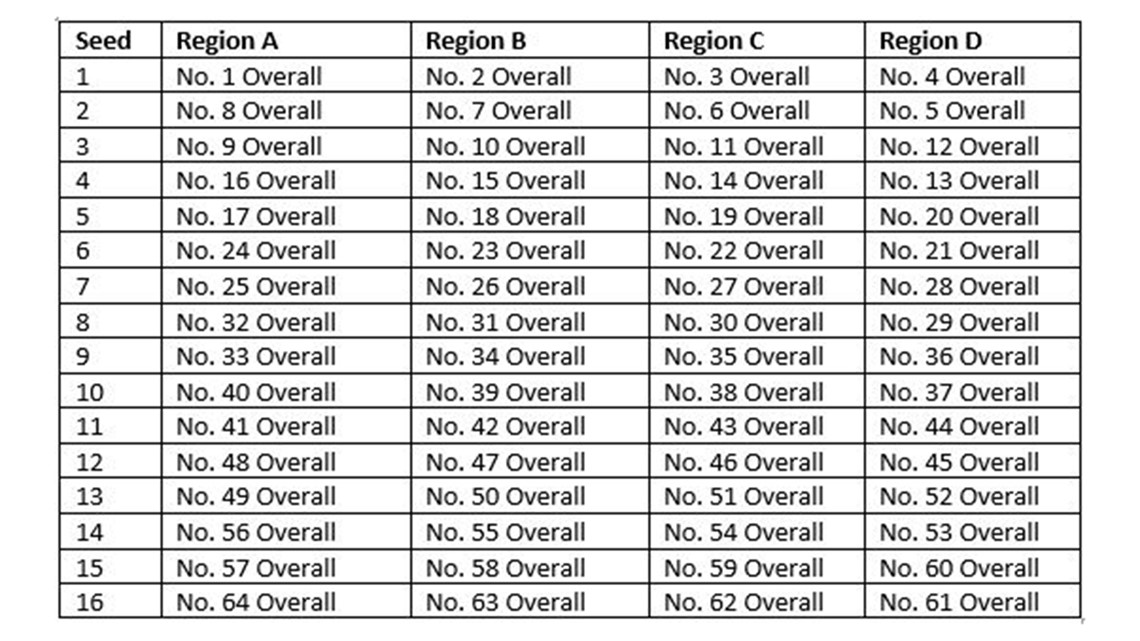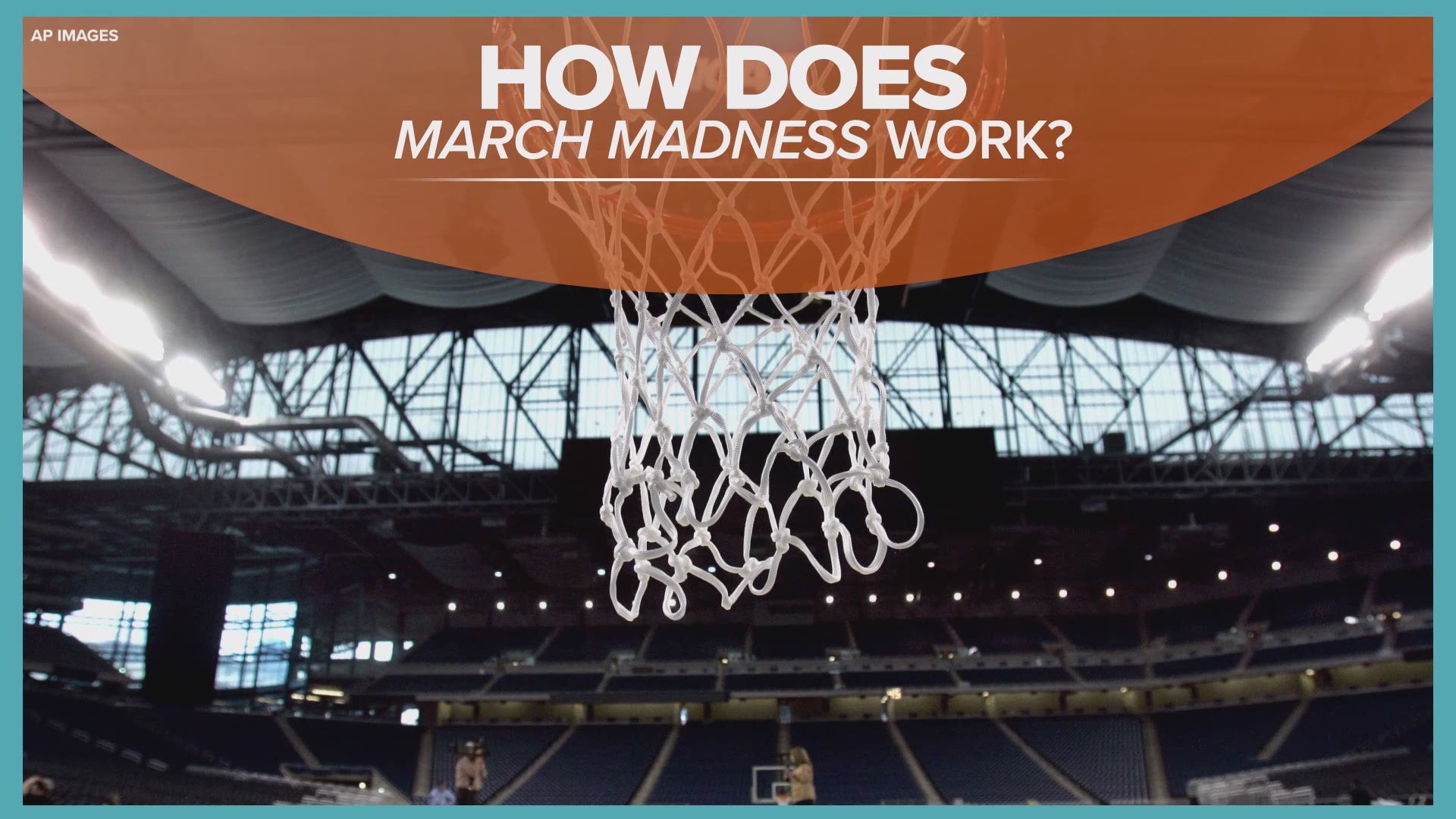This year's NCAA Tournament will be played entirely in and around Indianapolis due to COVID-19 restrictions after last year's tournament cancellation. That change means there won't be the typical geographical regions. It also means the selection committee is changing how it fills out the 68-team field.
Typically, the committee takes into account not only how good a team is but also where they are geographically located. The idea is to put them in a region where they will play relatively close to their hometown.
That brings a disadvantage for some of the top teams. All four No. 1 seeds also get an overall tournament ranking of 1-4. In a perfect world, the one ranked No. 1 overall should generally be given the weakest competition throughout their corner of the bracket. But due to geography, they are sometimes paired against stronger teams than they might normally face if location was not an issue.
With everyone playing in Indianapolis this year, the NCAA is doing away with geographic considerations. It is employing what is calls an "S-curve." It can get complicated, so here are a few ways to explain it.
Overall rankings
There are four teams per seed (Four No. 1s, four No. 2s, etc.). Each seed gets an overall tournament ranking by the committee (1-4, 5-8, 9-12, etc.)
- No. 1 seed in Region A is No. 1 overall in tournament
- No. 1 seed in Region B is No. 2 overall
- No. 1 seed in Region C is No. 3 overall
- No. 1 seed in Region D is No. 4 overall
Since the Region A No. 1 seed is considered the strongest team of the 68, it should get the easiest schedule. But if you were to rank all the No. 2 seeds in the same order as above, then the strongest top seed could have to face the strongest second seed in the Elite Eight while the weakest top seed may face the weakest 2-seed. This sometimes happens when geography is taken into account.
The idea of the S-Curve eliminates this, placing the second seeds in reverse order from above.
- No. 2 seed in Region A is No. 8 overall
- No. 2 seed in Region B is No. 7 overall
- No. 2 seed in Region C is No. 6 overall
- No. 3 seed in Region D is No. 5 overall.
This continues throughout the bracket, snaking back and forth.
- No. 3 seed in Region A is No. 9 overall
- No. 3 seed in Region B is No. 10 overall
- No. 3 seed in Region C is No. 11 overall
- No. 3 seed in Region D is No. 12 overall
And it goes on.
Bracket format
Take what you just read above and put it in the form of an actual bracket. If we're looking at Region A from above, this is how it would look.


As you can see, the No. 1 overall seed faces the weakest No. 16 seed in first round -- No. 64 overall. If the No. 1 makes it to the Elite Eight, it would not face the top-ranked No. 2 seed, but the one ranked lowest.
Table format
Still confused? Here is a table visualization of the system as explained by Sports Illustrated.


Like a fantasy sports draft
Here's one more example. If you've ever done a fantasy football draft, your draft format may look something like this: You have 12 owners. Whoever picks No. 1 in the first round will pick No. 12 in the second round, then pick No. 1 in the third round, and so-on. It's a similar principle.

